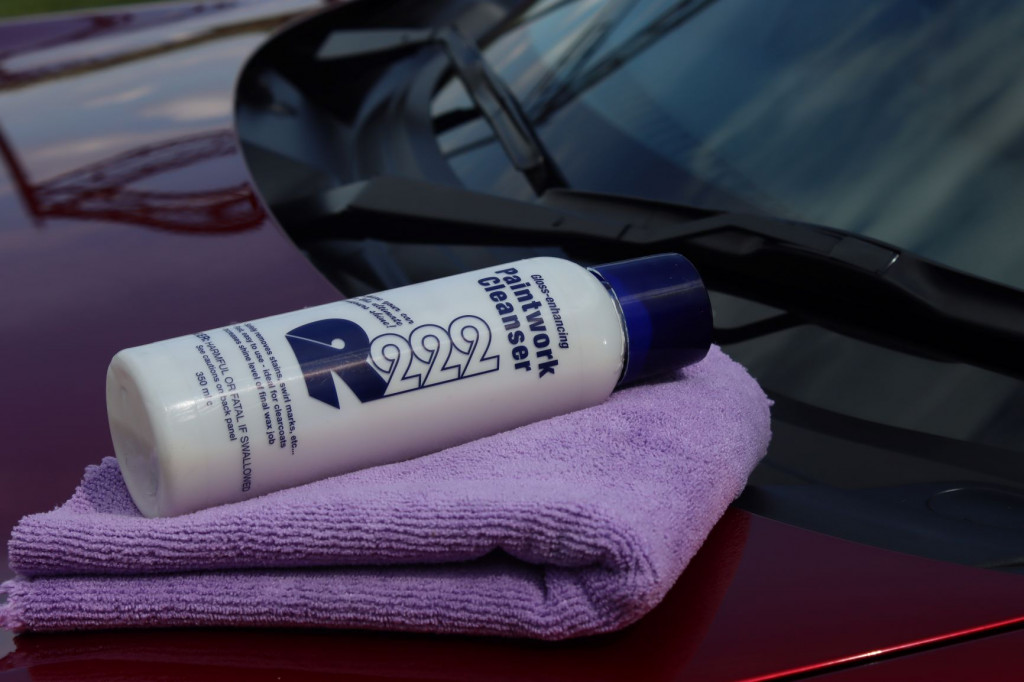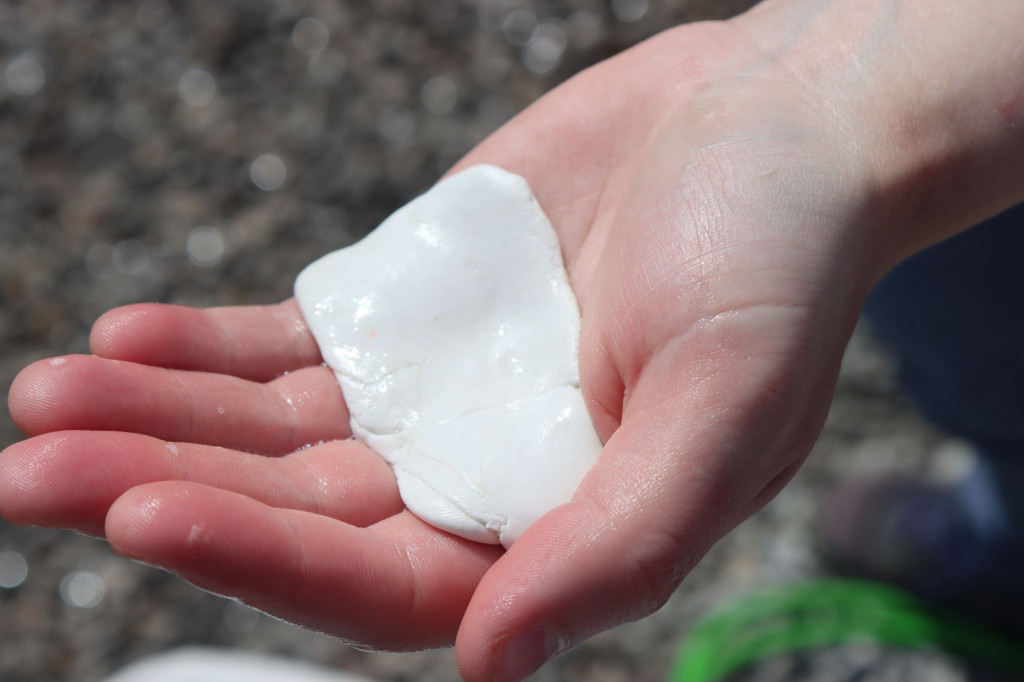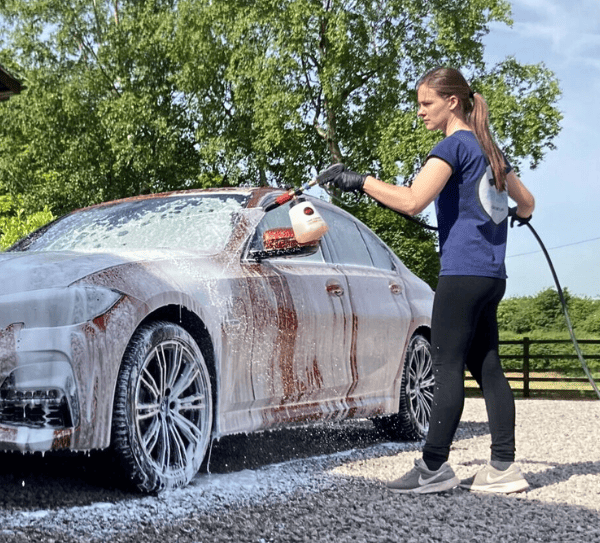If you’re planning on doing any paint correction, or applying a new sealant, or ceramic coating to your car, then it’s essential to remove old waxes and sealants first.
In this article, I’ll go through 5 different ways you can remove waxes and sealants.
You can combine all the ways together or, use one or two. It really depends on how strong the wax or sealant you already have on the surface is. You can check if the car still has wax on the surface using the simple trick I’ve outlined in this article.
The Quick Answer
Old car waxes and sealants can often be removed using wax-stripping shampoos or pre-wax cleansers. Claying and polishing may be required to remove the wax or sealant if it has been recently applied and cannot be removed using detergents.
Here are 5 methods for removing old waxes and sealants, from least to most aggressive. You should try the first two methods, then step up if the wax is more stubborn.
- During the wash process using a wax stripping shampoo
- Using a paintwork cleanser (also know as pre-wax cleansers)
- With an IPA or panel wipe solution
- Using a clay bar or mitt
- By polishing using a mild polishing liquid and soft foam pad
1. During the Wash Process
It’s possible to remove old layers of wax during the wash process, if you use the right products.
Some car owners use dish washing soap to remove car wax, but personally I don’t recommend it because it can dry out the paint, and has the potential to accelerate corrosion. Particularly if used too often.
There are a few other products you can use in the wash process though to safely remove old waxes.
Garage Therapy /ZERO: Decontamination Shampoo
This is a shampoo designed to cleanse the paintwork and remove old waxes and sealants. It can be used in the normal contact wash, or applied with a foam cannon. When left to dwell (but not dry), it is very effective at stripping waxes and sealants. However, it will not usually work on recently applied protection and may take multiple hits.
Bilt Hamber Surfex HD and Auto Foam
Surfex HD is an all-purpose-cleaner (APC) which is very potent. You can dilute it for use on the interior and exterior of the car. I like this APC in particular because it is really good value for money and versatile.
I usually use it in a snow foam cannon at a PIR of 5% with Bilt Hamber Auto Foam (at 2%), let it dwell for a couple of minutes and then go over the car with a wash mitt and rinse.
This usually only works for waxes which are quite old or not designed to be as durable, and is very unlikely to strip fresh protection in a single hit.
2. Using a Paintwork Cleanser
Another great way to remove wax, is by using a paintwork cleaner, sometimes referred to as a pre-wax cleaner. These are liquids that can be applied by hand, using a foam or microfiber applicator, or my machine using a dual-action polisher (never a rotary).
They essentially use chemicals, and sometimes mild abrasives, to remove old layers of waxes and sealants. Some have gloss-enhancing agents in the formulas to add a wet-look to the paint, but they can be easily removed if you want a bare surface by using method #4 on this list.

If you want a non-abrasive pre-wax cleanser, then definitely check out R222 (P21S). It’s the cleanser that I use to bring the paintwork to a high gloss finish.
It have found that it applies really nicely and buffs off easily. It normally takes around 5 minutes to apply it over the entire car, then I wait for 5-10 minutes, and it’ll take around 5 minutes again to remove it using a soft microfiber towel.
The only drawback, is that it has gloss-enhancing agents which means that it is not really as suitable to use before applying a sealant as it will prevent it from properly bonding.
Another popular alternative is Dodo Juice Lime Prime. It’s an abrasive pre-wax cleanser so it will have some cutting ability so it’s useful if you want to remove very superficial swirls at the same time. They also have a non-abrasive version called Dodo Juice Lime Prime Lite.
Keep in mind that these pre-wax cleansers can leave some oils behind to enhance the shine. If you want to remove these, then wash the car again using one of the products in step 1 to remove the remaining oils and fillers, or use an IPA wipe down.
3. IPA and Panel Wipe Solutions
Isopropyl alcohol (IPA) is a good option if you’re trying to remove excess oils left behind by old waxes. It’s also great if you want to remove polishing oils if you try method #5 as well.
IPA should be used with water at a 30% solution. You simply spray it on a soft, plush microfiber towel, and wipe it lightly across the surface. You’ll be able to see it dry almost instantly.
Don’t use it in direct sunlight or very hot conditions though because it evaporates too quickly, sometimes leaving a residue on the surface.
You can also use a panel wipe solution in a similar way to strip old waxes and sealants when the car is dry. They can be quite aggressive though, and can dry out the paint if used too often.
You should really only use IPA and panel wipe solutions sparingly, and make sure you try the previous methods before jumping straight to this one.
4. Using a Clay Bar or Mitt
If you’re planning on properly decontaminating the paintwork before applying a sealant, ceramic coating, or performing any paint correction, then you’ll also be pleased to know that clay bars and mitts will help to remove old waxes and sealants.
I wouldn’t recommend using a clay bar or mitt with the sole intention of removing wax. Only do it if you also need to polish the paintwork as well. This is because they are abrasive, so should only be used when necessary as they will cause minor swirl marks which will need to be removed by polishing.
Check out this article I’ve written to find out when you should clay bar your car.
Clay is particularly effective at removing wax when combined with a lubricant that also has wax stripping properties. So instead of using a clay lubricant spray, instead, use a car shampoo like Garage Therapy /ZERO: Decontamination Shampoo with water. This is a great way to strip stubborn waxes and sealants.

5. By Polishing
Another way of removing old waxes and sealants, is by polishing. You should ere on the side of caution with this method though.
If you have a strong sealant on the surface that won’t budge using any of the other methods, then polishing can be useful. However, polishes are abrasive, so there is some risk that you will remove clear coat as well. In fact, it is quite likely this will happen.
Unless you use a super soft pad, and a very mild polish, you will cut a very thin layer of clear coat away, unless of course the sealant is very durable and has only just been applied.
It’s most safely done by hand, although this can take a while to do the whole car. If you want to use a machine polisher, then always go with a DA polisher, not a rotary. Take a look at this article I’ve written on DA vs Rotary Polishers to learn more about this topic.
I would only really recommend using a polish to remove old waxes and sealants, if you plan to do some kind of paint correction as well. However, if used properly, it can be a good alternative as a last resort.
Thanks for reading, I hope you’ve found this article helpful! Don’t forget to take a look around the rest of the website to learn more about making your car look its best.

